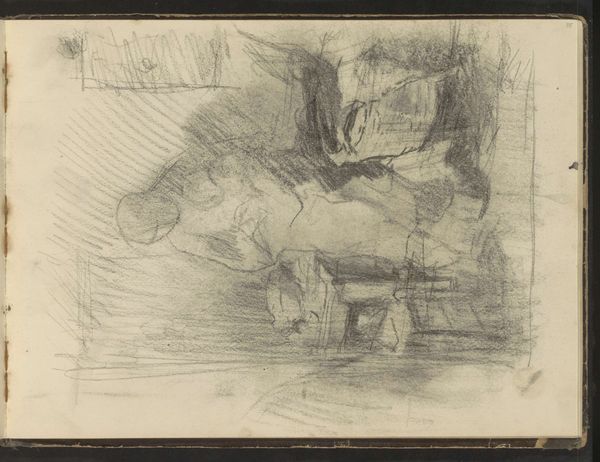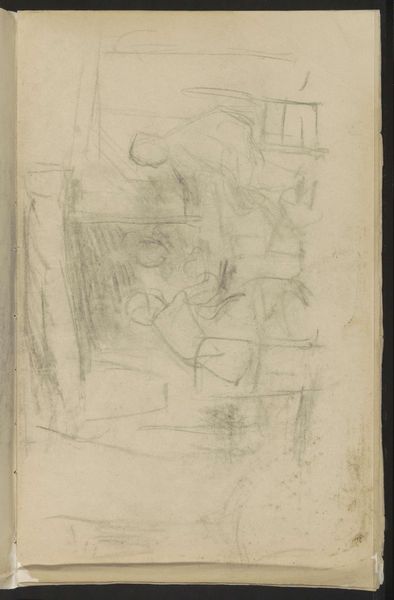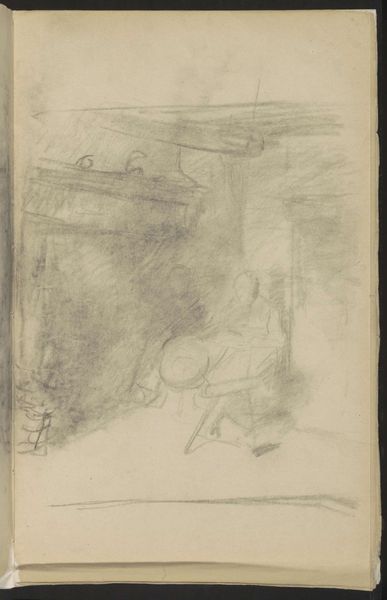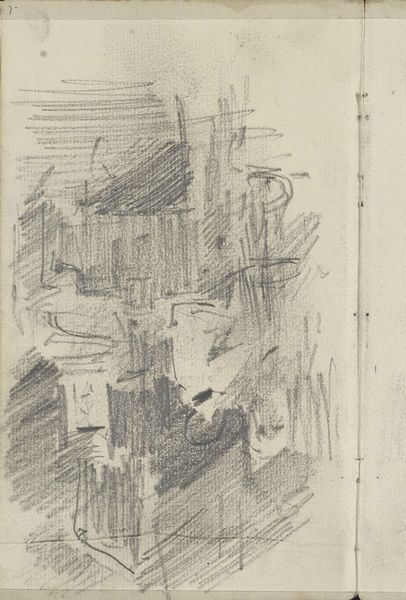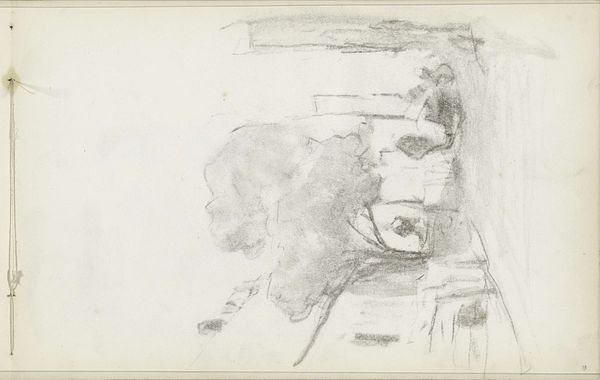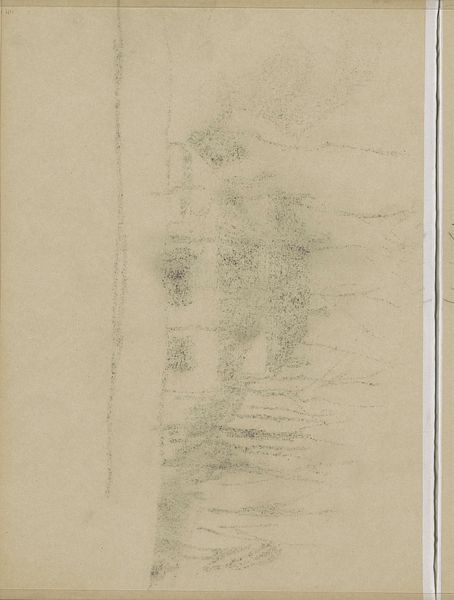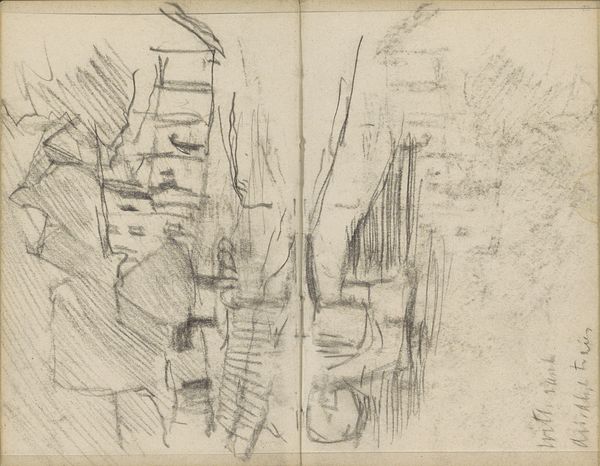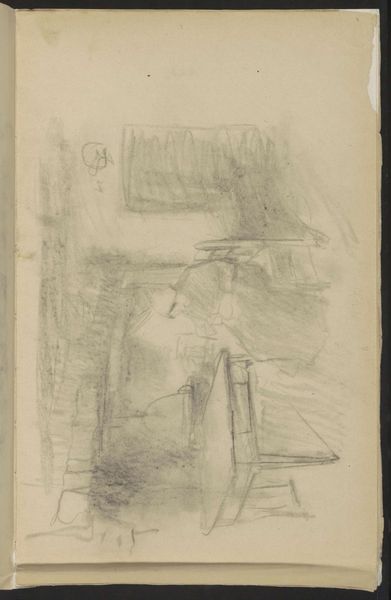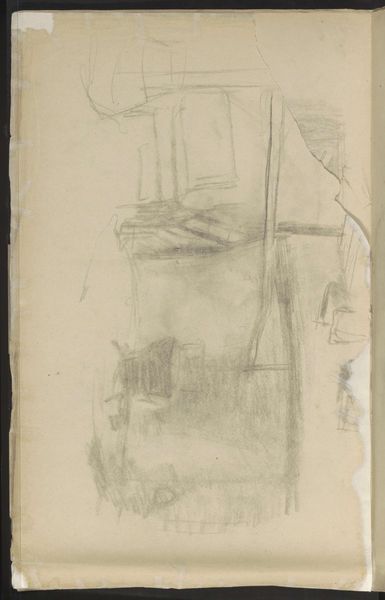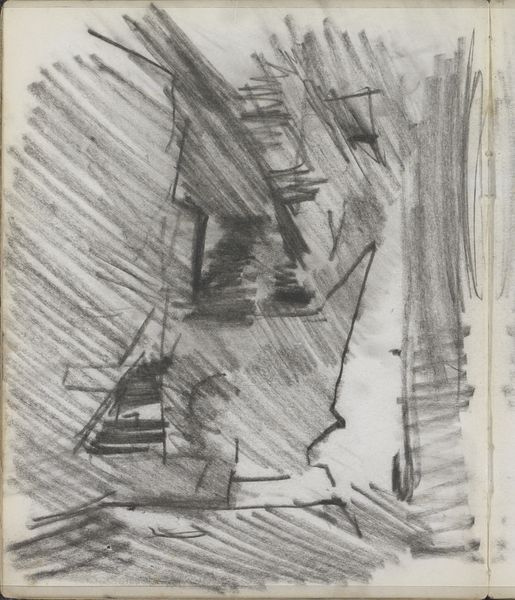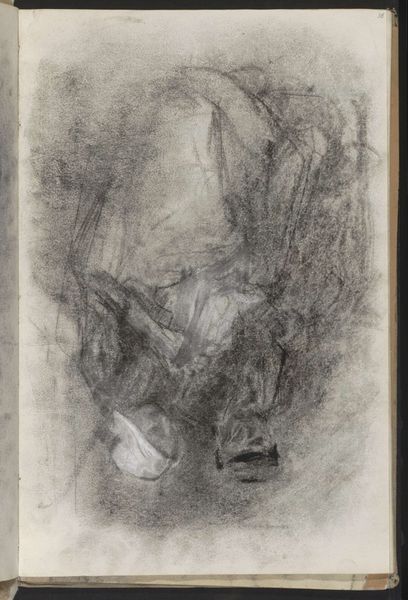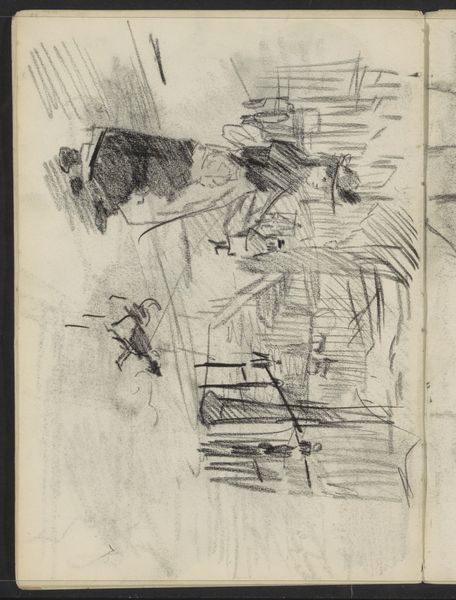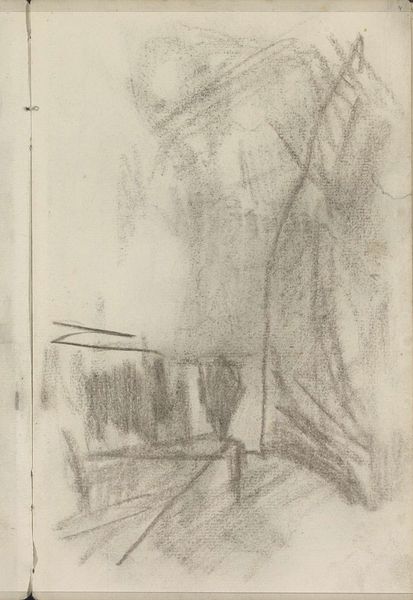
Boereninterieur met een moeder en twee kinderen rond een tafel 1854 - 1914
0:00
0:00
drawing, paper, pencil
#
portrait
#
drawing
#
impressionism
#
paper
#
pencil
#
genre-painting
#
realism
Copyright: Rijks Museum: Open Domain
Curator: Looking at Albert Neuhuys's pencil drawing on paper, titled "Boereninterieur met een moeder en twee kinderen rond een tafel," which roughly translates to "Farmer's Interior with a Mother and Two Children around a Table," made sometime between 1854 and 1914, it's striking how much raw emotion is conveyed with so few lines. Editor: It certainly has an affecting air about it, the monochromatic tones almost whispering of hard labour and simpler times. Curator: Indeed. Consider the bare essentials: paper, pencil, and the artist's keen observation. Neuhuys reduces the complexities of peasant life to essential forms. The cross-hatching around the figures provides dimension but it also, somehow, gives this simple scene density and texture. Editor: Yes, I see that. The technique seems less about refinement and more about revealing. It hints at the roughness of their garments, of the coarse-grained wood. Notice the positioning of the table itself – central, a point of sustenance. Food production within these modest dwellings must have relied on this table. Curator: Absolutely, the domestic setting almost disappears, overshadowed by the profound bond between mother and children. Notice how Neuhuys blurs their faces, generalizing them into types. They represent the universality of motherhood in humble surroundings, right? It becomes almost spiritual for me. Editor: But doesn't that generalization also distance us, make us into detached observers? I find it crucial that the materials—pencil, paper—allow Neuhuys to make multiple copies quickly. This democratizes access and underscores the potential mass-market appeal, transforming a peasant interior into a commodity to be consumed by wealthier classes. Curator: Possibly, yet the sketch also exudes tenderness. Despite the visible harshness, the embrace is very soft and moving. Editor: Agreed. Even a seemingly simple sketch of pencil on paper speaks to the means and material circumstances of artistic production, revealing socio-economic dynamics beyond a sentimental moment. Curator: So while I focus on its poetic narrative of peasant life, you ground us in its materiality, emphasizing its context and distribution, offering us a critical framework that doesn't undermine the poignancy. Editor: Precisely. Seeing it this way allows us to acknowledge both Neuhuys’ skill and also the circumstances in which the artwork was made.
Comments
No comments
Be the first to comment and join the conversation on the ultimate creative platform.
